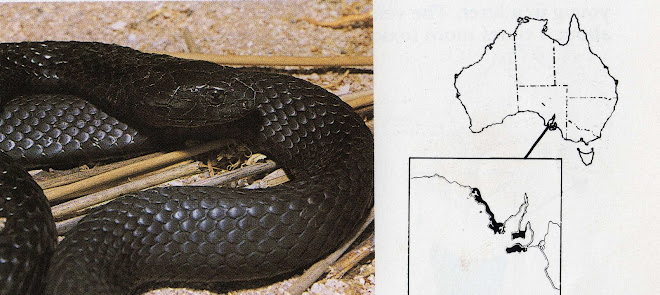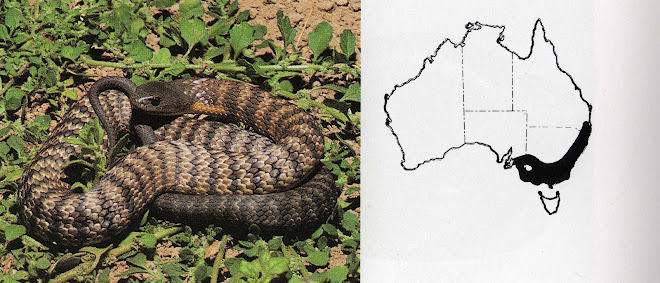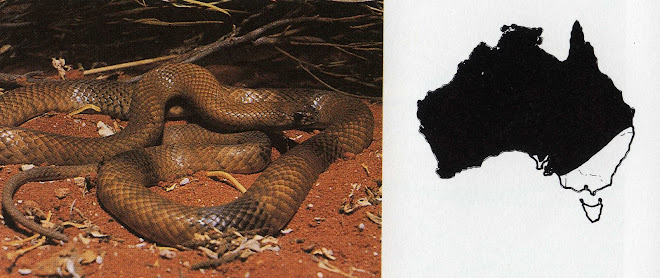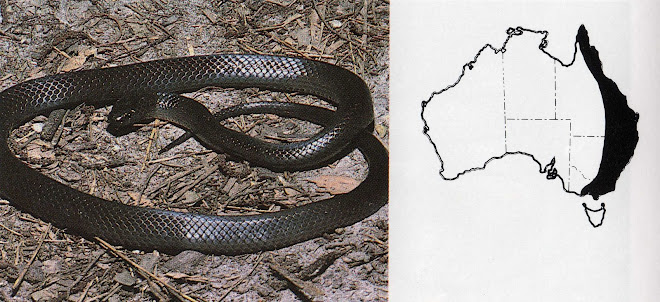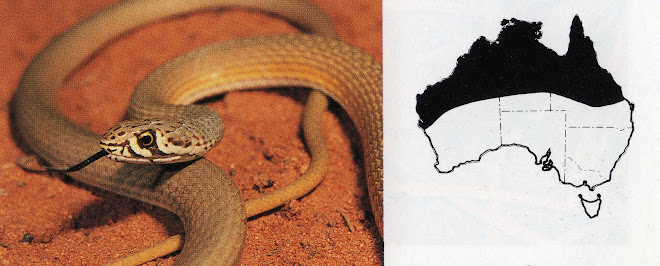The LD50 Described
The LD50 is a standard laboratory test with set guidelines laid down by the World Health Organisation. With the toxicity test in snakes, individual mice within a sample receive equivalent quantities of venom (each mouse is of the same weight). Each sample receives less venom than the previous. The LD50 is the amount of venom administered to each mouse to cause 50% of the sample to die. The lower the LD50 the higher the toxicity is on mice!. For the limitations and problems with this type of test see White (1987).
LETHALITY IN MICE
From Broad, Sutherland & Coulter (1979)
(In descending order including LD50 in mg/kg administered subcutaneously. In first figure venom diluted in saline solution only, 2nd includes the addition of a blood protein, bovine serum albumin)
Inland Taipan (Oxyuranus microlepidotus) 0.025 0.01
Eastern Brown Snake (Pseudonaja textilis) 0.053 0.041
Northern Taipan (Oxyuranus scutellatus) 0.099 0.064
Eastern Mainland Tiger Snake (Notechis s. scutatus) 0.118 0.118
Reevesby Island Tiger Snake (Notechis ater niger) 0.131 0.099
Beaked Sea Snake (Enhydrina schistosa) 0.164 0.173
Western Mainland Tiger Snake (Notechis scutatus occidentalis) 0.194 0.124
Black Mamba (Dendroaspis polylepis) 0.32
Chappell Island Tiger Snake (Notechis ater serventyi) 0.338 0.271
Southern Death Adder (Acanthophis antarcticus) 0.4 0.338
Gwardar (Pseudonaja nuchalis) 0.473
Copperhead (Austrelaps superbus) 0.56 0.5
Indian Cobra (Naja naja) 0.565 0.5
Dugite (Pseudonaja a. affinis) 0.66 0.56
Papuan Black Snake (Pseudechis papuanus) 1.09 1.36
Stephens's Banded Snake (Hoplocephalus stephensii) 1.36 1.44
Rough-scaled Snake (Tropidechis carinatus) 1.36 1.09
King Cobra (Ophiophagus hannah) 1.8 1.91
Spotted Black Snake (Pseudechis guttatus) 2.13 1.53
Collett's Snake (Pseudechis colletti) 2.38
King Brown Snake (Pseudechis australis) 2.38 1.91
Red-bellied Black Snake (Pseudechis porphyriacus) 2.52 2.53
Small-eyed Snake (Cryptophis nigrescens) 2.67
Eastern Diamond-backed Rattlesnake (Crotalus adamanteus) 11.4 7.70
Olive Whip Snake (Demansia olivacea) 714.2





